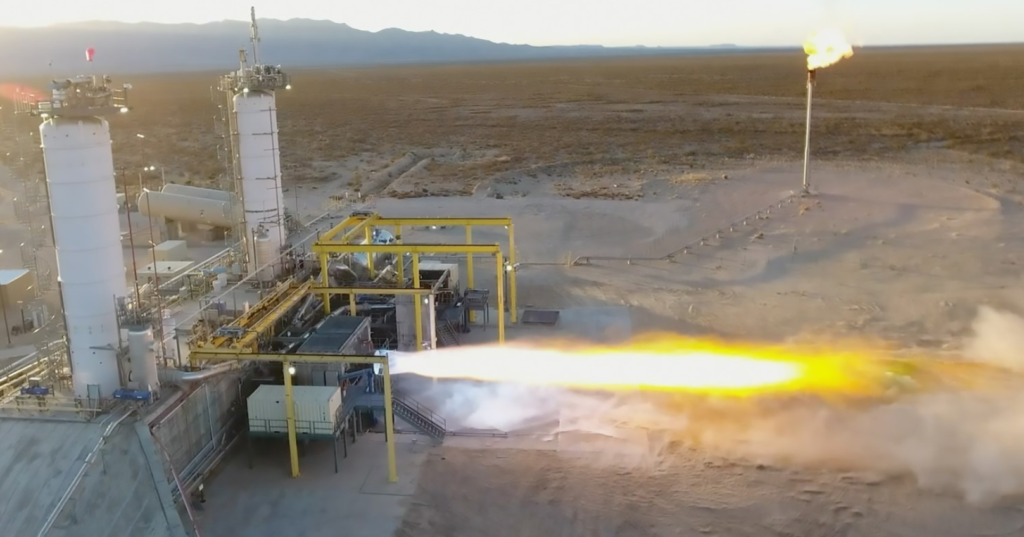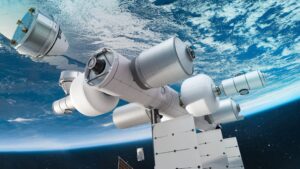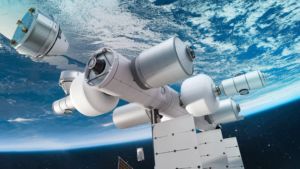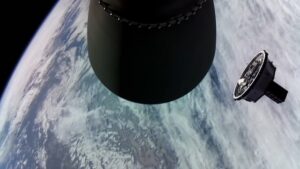
Blue Origin Continues To Work On BE-4 & BE-7 Engines
With pressure continuing to build on the development of Blue Origin’s engines, the company is hard at work trying to produce some high-quality components for launch vehicles of the future and more. While Blue Origin’s BE-4 engine often gets the most attention, the company has also been working on additional unique options such as BE-7.
In recent weeks the company has provided some valuable updates on what exactly they have been testing and the results with each engine. This information helps give us an idea of what to expect in the future regarding New Glenn, Vulcan, Blue Moon, and more. All of which are expected to become a large part in the future of accessing space.
While the development of engines such as BE-4 has not been the smoothest, Blue Origin has continued to progress no matter how small, and work towards its ambitious goals. This is an important quality as developing and manufacturing rocket engines is no easy feat. Here I will go more in-depth into some of the recent updates from Blue Origin, and also take a closer look at both the BE-4 and BE-7 engines.
Recent Updates

The rocket engines Blue Origin are developing right now are expected to be vital to the future of multiple launch vehicles and more. This not only includes the company’s own projects but also United Launch Alliance and other partners with high expectations of the future. While Blue Origin is not as open when it comes to sharing information as some other companies within the industry, they recently provided some valuable updates on both BE-4, and BE-7. Specifically, it began just over a week ago when Blue Origin tweeted saying, “You asked for video – we listened. Notable milestones for this #BE4 test included: Warm LOX/cold LNG start transient demonstration (bounding condition) First engine to eclipse 4000 seconds of accumulated hotfire test time, ultimately achieving 5000+ seconds.” This tweet included a minute long video of BE-4 firing at multiple different angles.
The next updates from the company came even more recently. Just two days ago on May 17th, Blue Origin tweeted mentioning, “Our test team is preparing to receive the first flight engines for acceptance testing prior to delivery to @ulalaunch. We’ve worked hand in hand with our ULA partners and recently hosted their team for a Test Stand Flight Engine Readiness Review.” For quite a while now there has been a lot of focus on BE-4 development and providing engines for ULA. As the company has managed to make significant progress on Vulcan and needs engines for further testing and progress. Next, later that same day Blue Origin tweeted again pointing out, “Both test cells have been hard at work pushing BE-4’s performance even higher as we enter the flight engine and qualification testing phase. When a single test cell is scheduled for maintenance, the other cell is ready for hotfire.” This tweet included two pictures of either test cell with a BE-4 engine firing within it. They then highlighted in another tweet that, “Our dual test cell architecture allows parallel processing of our BE-4 rocket engines. The second test cell was built in less than a year back in 2015.” It’s clear the two test stands play an important role in the development of BE-4 and allow the company more options in terms of testing the engine.
Finally, just yesterday, Blue Origin provided one last update this time on BE-7. Here the company tweeted saying, “Earlier this year, Blue Origin’s #BE7 lunar lander engines program completed another successful Thrust Chamber Assembly hotfire test campaign at @NASA_Marshall. To date, the campaign has completed a total of 92 tests for 3,347 cumulative seconds of hotfire.” This tweet included a 1 minute and 13 second long video filled with footage of a BE-7 firing.
BE-4 & BE-7 Overview

Now that we know exactly what Blue Origin has been working on in recent weeks, we can focus on the BE-4 and BE-7 engines themselves. Both engines share some similarities and differences. This often is the case for engines developed by the same company but also intended for different uses. Blue Origin points out that operationally reusable rockets demand high performance engines capable of deep throttling for soft landings. Built for multiple uses, Blue Origin’s family of engines is expected to power the next generation of rockets for commercial, civil, national security and human spaceflight. In addition, Blue Engines are designed, developed and manufactured at its headquarters in Kent, Washington. The company is now preparing for serial production of its most powerful engine, the BE-4, in Huntsville, Alabama. All of the company’s engines and propulsion subsystems are thoroughly tested and qualified in Van Horn, Texas.
Starting with BE-7 which Blue Origin does not provide a lot of information on. BE-7 is an additively manufactured, high-performance, dual-expander cycle engine, generating 40 kN (10,000 pound force) of thrust. As of right now, Blue Origin is maturing the design, manufacturing hardware, and have begun hot firing the engine as we saw before. This engine is designed to be used on Blue Origin’s lunar lander, Blue Moon. They point out that the high specific impulse, deep throttling and restart capabilities of the BE-7 make the engine ideal for large lunar payload transport, while enabling Blue Moon’s oxygen/hydrogen fuel cell power system. The engine was originally unveiled in 2019 and testing began that same year. Since then Blue Origin has continued to work on BE-7 and improve it over time. Back when the engine was announced, Brent Sherwood, vice president of advanced development programs at Blue Origin pointed out, “The BE-7, a turbomachinery-based engine using the most efficient propellants, is optimal for deep-space maneuvers and landing on the moon. Our engine test series is steadily maturing what’s needed to get Americans safely on the lunar surface as soon as possible.” The most recent update of BE-7 hot fire progress is a good sign that the company is continuing to work on the future of landing humans on the Moon.
Next is the BE-4 which has very high expectations for the coming years. As many of us know, this engine most notably is set to propel both New Glenn and Vulcan. As you can imagine, propulsion technology is foundational to the New Glenn program. New Glenn is attempting to benefit from more than a decade of engine and related technology development at Blue Origin. For New Glenn’s first stage, Blue Origin will use the BE-4, a 2,400 kN(550,000 lbf) sea level thrust booster engine. The BE-4 uses LOX and liquefied natural gas (LNG), a commercial form of methane, as an affordable, clean, and operable propellant combination. Industrial-grade LNG is plentiful and inexpensive, and its use allows for autogenously pressurized tanks and the elimination of helium as a pressurant. Blue Origin stresses the importance of using LNG because it is highly efficient, low cost and widely available. They point out that unlike kerosene, LNG can be used to self-pressurize its tank, also known as autogenous depressurization. This process eliminates the need for costly and complex systems that draw on Earth’s scarce helium reserves. LNG also possesses clean combustion characteristics even at low throttle, simplifying engine reuse compared to kerosene fuels. In terms of progress, BE-4 is currently undergoing full-scale engine development testing at Blue Origin’s facilities in Van Horn, Texas. Full rate production is expected to occur in its new engine manufacturing facility in Huntsville, Alabama. While there is still a lot of work necessary, Blue Origin is continuing to try and make progress.
Companies like United Launch Alliance are also good motivators. With so much progress being made on Vulcan, this has put some extra pressure on Blue Origin to deliver the necessary engines to ULA. Earlier this month Tory Bruno provided a few updates on Vulcan as it progresses. The next generation launch vehicle is set to use two BE-4 engines on the first stage for a significant amount of power. Specifically, the engines have a nominal thrust at sea level of 550,000 pounds. In this case, leveraging the proven processes, technology, and expertise of Atlas and Delta, the Vulcan Centaur rocket introduces new technologies and innovative features to create the highest value launch service with optimal performance to meet the full range of mission requirements. By making launch more affordable, Vulcan Centaur opens up new opportunities for space capabilities, offering unprecedented flexibility in a single system. From low-Earth orbit to Pluto, the single-core Vulcan Centaur does it all.
Conclusion
Blue Origin has been working on many different projects over the past few years. In recent months and weeks especially, the company has provided some valuable updates on both BE-4 and BE-7 engine progress. This helps give us an idea of what to expect in the future regarding Vulcan, New Glenn, and even Blue Origin’s lunar lander. However, the company still has a lot of work to do prior to the launch of these next generation rockets. We will have to wait and see how it progresses and the impact it has on the space industry.



